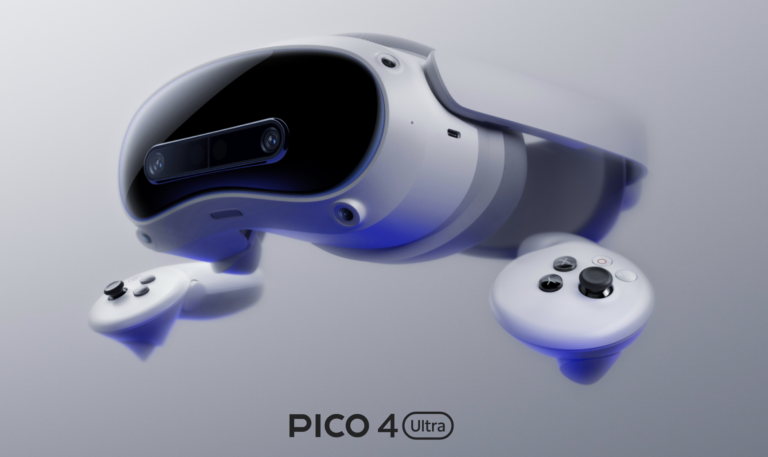Pico 4 Ultra Review: A New Contender in Virtual Reality
Overview of the Pico 4 Ultra
The Pico 4 Ultra has arrived, aiming to compete with established players in the mobile VR market. Despite its impressive specifications on paper, including enhanced power and mixed reality capabilities, early impressions suggest that it doesn’t quite match the performance of Meta’s Quest 3. Our assessment explores whether the Ultra can close the gap where its predecessor fell short.
Progress Since Pico 4
Back in late 2022, Bytedance launched the original Pico 4, focusing on taking on Meta’s Quest 2. However, earlier reviews pointed out several shortcomings: lens sharpness was subpar, the software felt unpolished, and the app ecosystem was significantly lacking. Fast forward almost two years, and the Pico 4 Ultra makes its debut. This time, it brings more robust specifications and new mixed reality features, but does it translate to a better user experience?
Key Features of Pico 4 Ultra
- Enhanced Performance: Powered by the Qualcomm XR 2 Gen2 chip, the Ultra is designed for improved functionality compared to its predecessor, featuring 12 GB of RAM—all crucial for a smooth VR experience.
- Camera Improvements: Two 32 MP cameras now replace the single 16 MP camera from the Pico 4, allowing for advanced mixed reality experiences.
- Connectivity Upgrades: The Ultra supports Wi-Fi 7 and Bluetooth 5.3, enhancing connectivity options to improve overall performance.
- Expanded Storage: With a fixed storage of 256 GB, users can store more content without needing variations of the device.
Comparing Pico 4 Ultra and Quest 3
Although the Ultra sports specifications that on paper appear superior, practical performance yields different results. The advantages of the Ultra don’t significantly translate into real-world performance comparisons with Quest 3.
Battery Life and Comfort Level
Regarding battery, the Pico 4 Ultra is equipped with a 5700 mAh battery, slightly larger than that of its predecessor. Charging is relatively swift, with the battery reaching about 65% capacity within 60 minutes. Depending on usage, the battery can last from an hour and half up to three hours, finishing up with several demanding applications like mixed reality or streaming experiences.
Despite having a well-balanced feel due to its weight, comfort poses challenges. Users have reported issues with the padding, leading to discomfort during prolonged use. Tightening the headband to minimize wobbling results in pressure marks and discomfort.
Evaluating the Controllers and Tracking
The controller design has been revamped, eliminating tracking rings for a more streamlined experience. They provide a comfortable grip and reasonable tracking accuracy. However, hand tracking continues to present difficulties, mirroring concerns from the original Pico 4 model.
Display and Lens Quality
The Pico 4 Ultra utilizes pancake lenses similar to those used in the original Pico 4. However, users have noted that the clarity diminishes significantly when viewing towards the edges of the field of view, a contrast to the immersive experience promised by competing headsets like Quest 3.
Ghosting and reflections are noticeable impairments in high-contrast scenes, and visual distortion is reported when tracking the edges of screens or avatars during use. This is especially problematic in productivity applications, where menu visibility can become obscured.
Mixed Reality Experience
The mixed reality features of the Pico 4 Ultra offer basic pass-through functionality. While some users can read smartphone displays closely under good lighting, distortion remains an issue when interacting with content. However, gaming experiences in mixed reality, like Angry Birds VR, performed smoothly, highlighting its potential even if mixed reality apps remain underdeveloped.
Software and Performance Aspects
The updated firmware provides users with smooth multitasking capabilities and responsive application performance. Nevertheless, the user interface, although structured, lacks polish. Users continue to encounter untranslated text and graphical inconsistencies that hinder usability. The limited app library compared to Quest 3 also restricts the potential this device could offer.
Pico 4 Ultra as a PC VR Headset
Notably, the Pico 4 Ultra excels as a PC VR headset, particularly when connected to high-end gaming PCs. Users have reported remarkable performance when playing demanding games like Half-Life: Alyx, showing that it has solid potential for VR enthusiasts wishing to immerse themselves in high-fidelity gaming.
Spatial Multimedia Capabilities
The Pico 4 Ultra introduces the ability to record and playback spatial images and videos. The recording process utilizes a transparent frame in pass-through mode, a unique feature that makes content creation straightforward, although the overall image quality for spatial videos doesn’t meet expectations.
Pico Motion Trackers: Adding Value
The Pico motion trackers are a noteworthy addition, allowing for enhanced tracking of leg movements. Their lightweight and intuitive design enable seamless integration into games, demonstrating the potential for an immersive experience. Future game development may shine a light on their utility in various applications.
Final Thoughts on the Pico 4 Ultra
While the Pico 4 Ultra is not a poor VR headset, it struggles to provide sufficient advantages over its predecessor and competitors alike. Users seeking exceptional edge-to-edge clarity, an extensive app library, or a more polished experience may find the current offering lacking.
- For Pros: Improved performance, responsive controllers, and versatility as a PC VR headset.
- For Cons: Ongoing software issues, discomfort in prolonged use, and limited application support.
In conclusion, every major advancement holds promise, but the Pico 4 Ultra’s journey in the VR landscape has just begun and will depend heavily on future development and support dynamics.




0 Comments